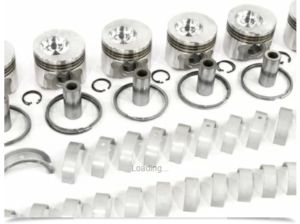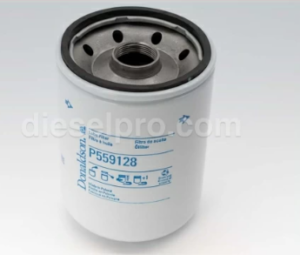
The Caterpillar 3208 marine engine has long been a trusted workhorse in the marine industry, renowned for its robust design, dependable performance, and versatility. Originally introduced in the 1970s, this engine quickly established itself as a reliable choice for operators seeking a balance between power, durability, and serviceability. Over the decades, the Caterpillar 3208 has become synonymous with marine reliability, earning a reputation for ruggedness and ease of maintenance in even the most challenging environments.
Key Specifications of the Caterpillar 3208 Marine Engine
At its core, the 3208 is an 8-cylinder, V-type, four-stroke diesel engine with a displacement of approximately 10.4 liters (636 cubic inches). This model is available in both naturally aspirated and turbocharged configurations, delivering power ratings ranging from 210 to over 400 horsepower, depending on the specific application and tuning. Its design focuses on high torque output at low RPM, essential for effective marine propulsion, particularly in vessels where slow-speed maneuverability and reliable pushing power are paramount. Additionally, the engine’s optimized fuel efficiency ensures cost-effective operation, a crucial consideration for long-distance and commercial marine voyages.
Mechanical Simplicity and Serviceability
The Caterpillar 3208’s mechanical simplicity distinguishes it from many of today’s electronically controlled engines. It utilizes a mechanical fuel injection system and other traditional components, which are not only familiar to experienced marine mechanics but also easier to maintain and service in the field. This simplicity makes the engine particularly well-suited for applications where field serviceability, ruggedness, and minimal electronic reliance are critical, such as in remote locations or on vessels operating without easy access to advanced diagnostic tools or replacement parts.
Compact Footprint and Versatile Mounting Options
Its compact footprint and versatile mounting configurations allow the Caterpillar 3208 to be installed in a broad range of marine vessels. This flexibility makes it a go-to choice for vessel designers and operators who need to maximize space and adapt the engine to specific layouts.
Applications of the Caterpillar 3208 in Marine Vessels
The Caterpillar 3208 has powered a wide range of marine vessels, including:
- Fishing vessels: The engine’s ability to deliver continuous power under varying loads is essential for trawlers, seiners, and longliners operating in demanding waters.
- Commercial workboats: Including tugboats, pilot boats, and crew transfer vessels, where durability and power density are crucial for daily operations.
- Yachts and leisure boats: Where quiet, reliable propulsion and ease of maintenance are highly valued by owners and operators.
- Passenger ferries and water taxis: Especially in regions where environmental conditions can stress engines, and downtime can affect revenue and customer satisfaction.
- Offshore supply vessels and small cargo carriers: Where fuel efficiency, reliability, and sufficient torque are essential to maintaining schedules and moving heavy loads.
Specialized and Auxiliary Applications of the Caterpillar 3208
In addition to main propulsion, the 3208 has been used to power auxiliary equipment such as marine generators, winches, pumps, and compressors. It also sees service in:
- Dredging vessels, where consistent torque and durability are vital for operating dredging pumps and support systems.
- Research vessels and oceanographic platforms, which depend on dependable powerplants for onboard systems and propulsion in remote waters.
- Military and patrol craft, valued for mechanical simplicity and reliability in adverse conditions.
Long-Term Viability and Global Support
Today, although Caterpillar no longer manufactures the 3208 as a new product, countless units remain in active service worldwide. This enduring presence is a testament to the engine’s design excellence and the global support network. Parts, rebuild kits, and service support continue to be available through authorized Caterpillar dealers and specialized suppliers. This ensures that the 3208 remains a vital component in marine propulsion and auxiliary systems, even as newer technologies emerge.
Legacy of the Caterpillar 3208 Marine Engine
The Caterpillar 3208’s legacy continues, not just as an engine of the past, but as a trusted powerplant for modern marine operations, where reliability, serviceability, and performance remain paramount.
Importance of Regular Servicing for Optimal Engine Performance and Longevity

The longevity and reliability of the Caterpillar 3208 depend heavily on adherence to a structured and thorough maintenance schedule. Like any marine diesel engine, the 3208 operates in harsh environments characterized by fluctuating temperatures, high humidity, saltwater exposure, and variable loads. These challenging conditions place significant stress on critical engine components, including the cooling system, lubrication system, fuel delivery system, and moving mechanical parts.
Engine Longevity Through Preventive Maintenance

Routine servicing is not merely about compliance with manufacturer recommendations—it’s about protecting your investment and ensuring peace of mind at sea. A neglected 3208 is prone to early wear, performance degradation, and potentially catastrophic failure that could jeopardize your vessel’s operational readiness and safety. Essential servicing tasks such as:
- Regular oil and filter changes to remove contaminants and prevent excessive wear on bearings and moving parts,
- Cooling system maintenance, including coolant changes, flushing, and cleaning of heat exchangers, which prevent overheating and scaling,
- Fuel system filter replacement to ensure clean fuel delivery and prevent injector clogging, and
- Inspection of critical components such as belts, hoses, clamps, and engine mounts for signs of wear, leaks, and degradation,are all designed to reduce the risk of operational failure, extend the engine’s service life, and enhance reliabilityduring demanding marine operations.
Additionally, early identification of potential issues, such as minor leaks, loose fittings, or unusual vibrations, allows for corrective action before these issues escalate into major failures. In remote marine environments, where access to repair facilities may be limited, a preventive approach is not just recommended—it’s essential for continued operation.
The cost of proactive maintenance is a fraction of the cost of major repairs or full engine overhauls that can result from negligence. Moreover, consistent servicing helps maintain optimal fuel efficiency, reducing operating costs, emissions, and the likelihood of regulatory non-compliance. Keeping a well-maintained engine not only protects your investment but also demonstrates a commitment to environmental stewardship and operational excellence.
Performance Optimization

A well-maintained Caterpillar 3208 delivers reliable power output, consistent torque, and smooth operation—all essential for safe marine travel and effective commercial operations. Key servicing tasks such as:
- Valve lash adjustments to ensure precise valve timing and efficient combustion,
- Turbocharger inspections to check for signs of wear, leaks, or contamination that could reduce boost efficiency, and
- Injector testing to guarantee optimal fuel atomization and combustion efficiency, are crucial for maintaining the engine’s designed horsepower and fuel economy.
This meticulous attention to detail not only maximizes performance but also minimizes downtime—a critical factor for commercial vessels, where every hour of operation counts. Whether it’s delivering cargo, supporting offshore operations, or providing essential passenger services, a dependable engine translates into consistent revenue and customer satisfaction.
Moreover, performance optimization through regular servicing helps to prevent secondary damage to connected systems, such as the marine transmission, cooling systems, and electrical systems, ensuring the entire vessel operates smoothly and efficiently.
Safety and Environmental Responsibility
Neglected servicing can result in hazardous conditions, including fuel or oil leaks, overheating, or even catastrophic engine failure at sea, which can endanger lives and the environment. Regular inspections of safety systems, such as engine protective devices, cooling system components, fuel systems, and exhaust systems, are essential for safeguarding against these risks.
Maintaining the engine in peak condition not only enhances operational safety but also helps vessels meet increasingly stringent emissions regulations. A properly maintained engine operates within designed emission parameters, reducing harmful pollutants such as particulate matter, nitrogen oxides (NOx), and unburned hydrocarbons. This proactive approach demonstrates environmental responsibility and helps maintain compliance with local, regional, and international maritime regulations.
Operational Efficiency and Cost Savings
Routine servicing reduces unscheduled downtime, which can be costly and disruptive, especially for commercial vessels operating on tight schedules. By adhering to the maintenance schedule, vessel operators can plan service windows during off-peak periods, reducing operational disruptions. Additionally, proactive maintenance can lead to lower insurance premiums by demonstrating a commitment to safety and equipment reliability.
Protecting Resale Value
A meticulously maintained Caterpillar 3208 with a documented service history commands a higher resale value. Potential buyers in the used marine engine market prioritize engines with evidence of consistent maintenance, as it indicates a lower likelihood of hidden problems and provides assurance of the engine’s reliability. Whether you plan to upgrade to a newer engine, repurpose your vessel, or sell it on the open market, a well-serviced engine is a valuable assetthat can significantly enhance the resale process.
Furthermore, complete service records not only enhance market value but also support warranty claims and simplify the transfer of ownership by providing clear, verifiable documentation of the engine’s maintenance history.
Disclaimer: Always Refer to the OEM Operation & Maintenance Manual for Complete Procedures
While this Practical Guide To Servicing The Caterpillar 3208 Marine Engine provides a comprehensive overview of servicing strategies, it is not a replacement for the official OEM documentation. The Operation & Maintenance Manual (SEBU6090-03-01) published by Caterpillar contains critical details, specifications, and procedures that are essential for the safe and effective servicing of your engine.
The manual includes torque specifications, fluid capacities, maintenance intervals, detailed disassembly and reassembly procedures, and troubleshooting guidelines specific to your 3208 model. It also outlines important safety warnings, proper tool usage, and OEM parts requirements that must be strictly followed to avoid equipment damage, injury, or environmental hazards.
For any service, especially complex tasks such as fuel injection system maintenance, valve adjustments, turbocharger inspections, or cooling system overhauls, always consult the official Caterpillar manual and work with qualified technicians. Using genuine Caterpillar parts and following OEM-recommended procedures is the only way to ensure the continued reliability and compliance of your Caterpillar 3208 marine engine.
In addition to following the OEM manual, consider establishing a routine service log for your engine. Keeping detailed records of maintenance activities, parts replacements, and inspections not only ensures compliance with the recommended schedule but also supports warranty claims, resale value, and insurance documentation.
Additional Resources
Practical Guide To Servicing The Caterpillar 3208 Marine Engine
Marine CAT 3208 Component Maintenance Life
Keeping the Caterpillar 3208 Marine Engine Running: A Retrospective and How Diesel Pro Power Supports It
Caterpillar 3208 Injectors: High-Quality Aftermarket Options from Diesel Pro Power
The History of the Caterpillar 3208 Engine
Common Applications of the Caterpillar 3208 Engine
Troubleshooting Common Issues with the Caterpillar 3208
Maintenance Tips for Maximizing the Life of Your Caterpillar 3208 Engine
Comparing the Caterpillar 3208 to Other Marine Engines



 Free US Calls: 1-888-433-4735
Free US Calls: 1-888-433-4735 International: 305-545-5588
International: 305-545-5588